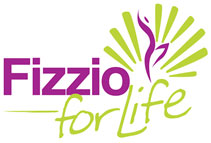Temporomandibular Joint Disorder | Benign Paroxysmal Positional Vertigo | Headaches | Cerebrovascular Accident | Acquired Brain Injury
Temporomandibular Joint Disorder (TMJ or TMD)
The temporomandibular joint is the joint between the jaw and the head. Temporomandibular joint disorder (TMD) covers a wide range of conditions which can cause jaw pain. This could include arthritis, hypermobility, inflammation of the joint and it can even be caused by cervical spine (neck) pain. TMD can be debilitating because of its impact on daily activities such as eating, drinking and speaking.
Symptoms
- Pain or stiffness with movements of the jaw such as opening, closing and side to side movements
- Some cases may lead to the inability to open the mouth to eat (i.e. closed lock)
Which of our team members work with TMD?
- Maathangi or Michael
What might a treatment plan look like?
This will depend on your individual assessment findings. This may look like
- Two times a week for the first week, then weekly physiotherapy for 2-3 weeks, progressing to fortnightly/monthly reviews for a further 2-4 sessions.
- In some cases, you may be referred to a dentist or advised to see an ENT specialist or neurologist for assistance with management
Benign Paroxysmal Positional Vertigo (BPPV)
Benign paroxysmal positional vertigo is a form of vertigo that can cause very severe, short bouts of dizziness that are triggered by movements of your head. The vertigo may also be accompanied by nausea, and your eyes will drift and flick uncontrollably (nystagmus). These symptoms may last about a minute and then settle. Between episodes, some people may be symptom-free, while others can feel a mild sense of imbalance or disequilibrium.
It is important to know that BPPV will not:
- give you constant dizziness that is unaffected by movement or a change in position.
- affect your hearing
- cause fainting or headaches
- neurological symptoms such as numbness, tingling/pins and needles, speaking or swallowing issues, double vision, or trouble coordinating your movements.
If you have any of these additional symptoms, please tell your GP immediately.
Symptoms
- Short episodes of severe dizziness
- Often triggered by sudden head movements
- May cause nausea and vomiting
What might a treatment plan look like?
- Treatment usually requires 1-2 sessions of positional manoeuvres with post-treatment care advice
- Total of 2-3 sessions over 2 weeks for simple cases, 4-6 sessions over a month if there are residual balance deficits
Which of our team members work with BPPV?
- Michael, Maathangi
Headaches
Headaches are a common complaint, but there are hundreds of potential causes of pain in the head. They can be broadly categorised into primary or secondary headaches with different causes for each. Physiotherapy can’t help with all types of headaches as some, such as migraines, may be caused by factors outside of our scope of practice. If you are experiencing headaches along with vision, speech/language or motor changes it is important to visit your GP to discuss this with them.
Symptoms
- Pain in the head
- May be accompanied by disturbances in any of the following systems: vision, sensory, speech/language, motor
- May present with associated neck pain
What might a treatment plan look like?
- Initial visit – full assessment to rule out any potentially sinister causes of headaches and to identify a likely cause of your pain
- Physiotherapy twice a week in the first 1-2 weeks followed by 3-4 weekly sessions
- Ongoing medical management may be required for certain types of headache such as migraines or headaches with a potential neurological cause
Which of our team members work with headaches?
- All of our physiotherapists
Cerebrovascular Accident (CVA) – Stroke
A cerebrovascular accident (stroke) is a neurological condition caused by a deficiency in the blood supply to the brain. This may be caused by a clot in one of the arteries in the brain or a bleed.
Symptoms
- Muscle weakness on one side of the body
- Speech difficulties
- Drooping or numbness of one side of the face
What might a treatment plan look like?
The first 6-12 weeks are the critical period for stroke recovery. This is typically when the most healing occurs. During this time, individuals may stay in the hospital, initially in acute neurology before being transferred to the rehabilitation unit, where they will be seen by physiotherapists, occupational therapists and speech language therapists
Once discharged, physiotherapy is beneficial for ongoing functional recovery
Long-term weekly or fortnightly sessions with a physiotherapist tend to be the norm for individuals who have sustained a more severe stroke with persistent symptoms
Which of our team members work with stroke?
- Physiotherapists
- Exercise Physiologists (late-stage rehabilitation)
Acquired Brain Injury (ABI)
An acquired brain injury is damage to the brain acquired after birth. This can be through various causes. ABIs affect different parts of the brain depending on how the injury was acquired so symptoms can be highly variable between individuals. It is common to have some sort of motor impairment and some change to behaviour/personality.
Symptoms
- They will be different for each person and can range from mild to profound
- Increased physical and mental fatigue, slowing down of information processing, planning and problem solving
- Changes to behaviour and personality, physical ability, sensation, thinking and learning
- Motor symptoms such as weakness or difficulty initiating movement
What might a treatment plan look like?
- This will depend greatly on the individual’s specific injury, their activity limitations and their goals
- An initial 6-12 week (weekly/fortnightly physiotherapy) program is generally advised to allow for response to exercises
Which of our team members work with ABI?
- Physiotherapists
- Exercise physiologists

